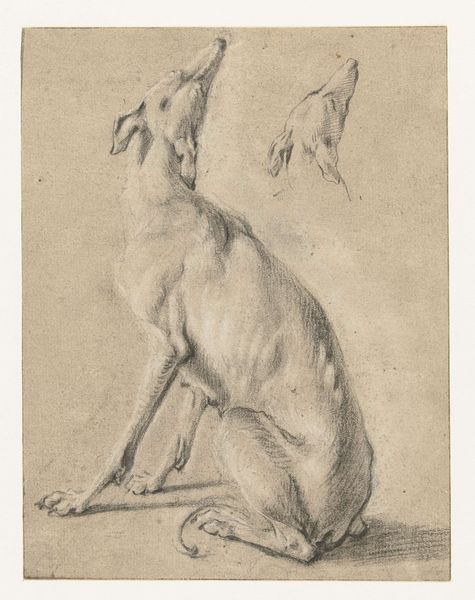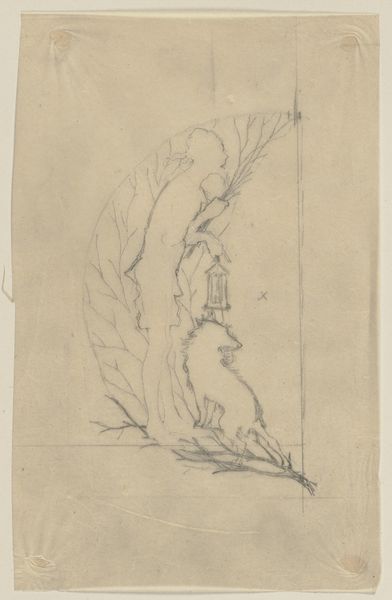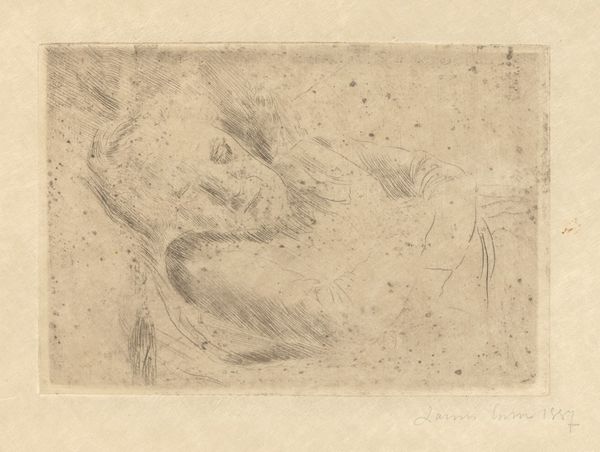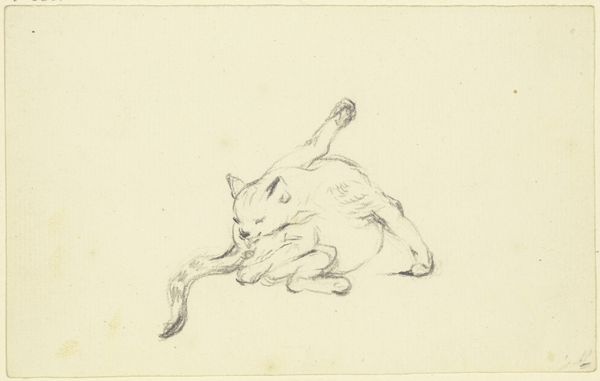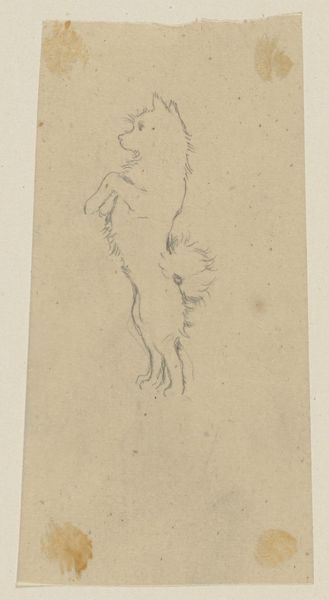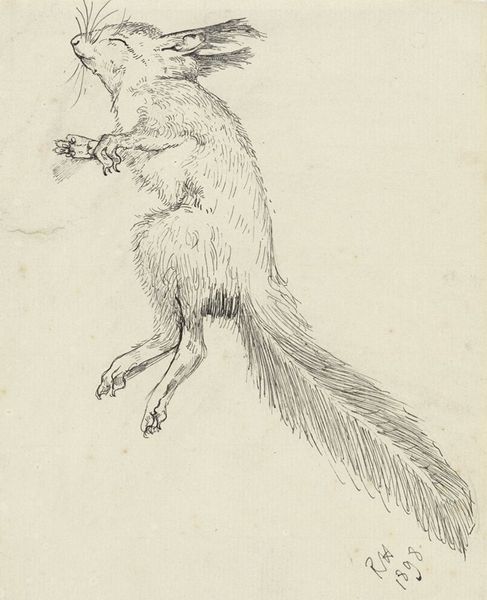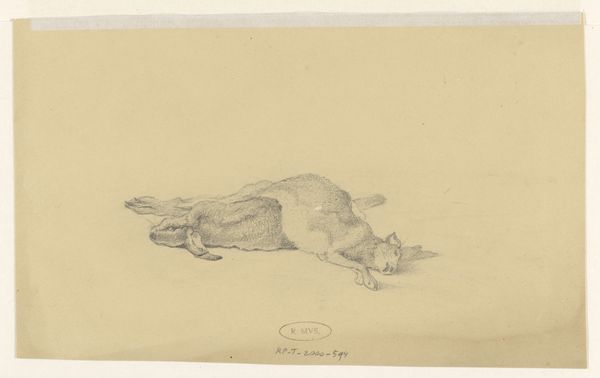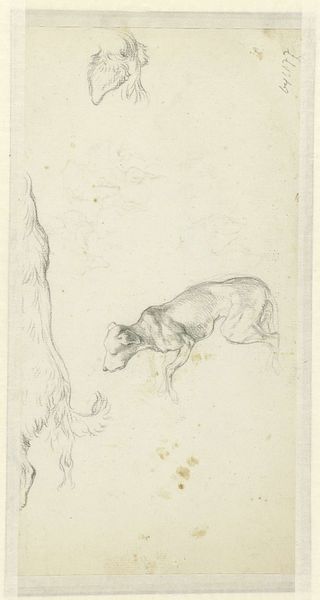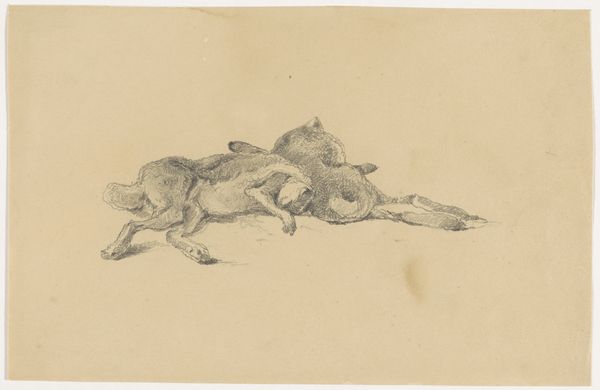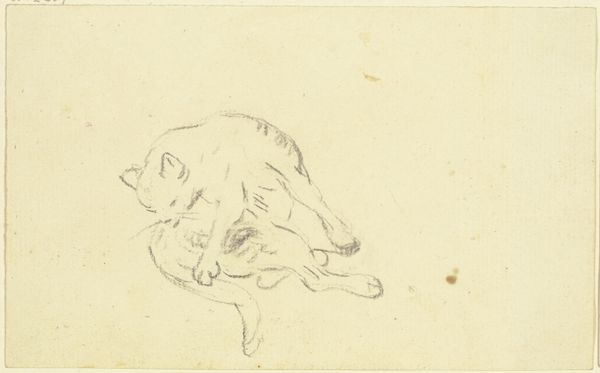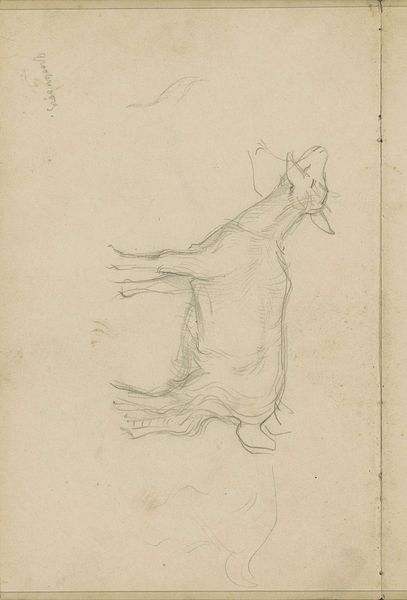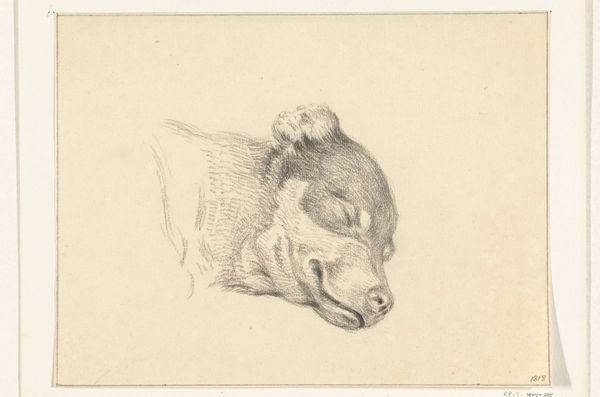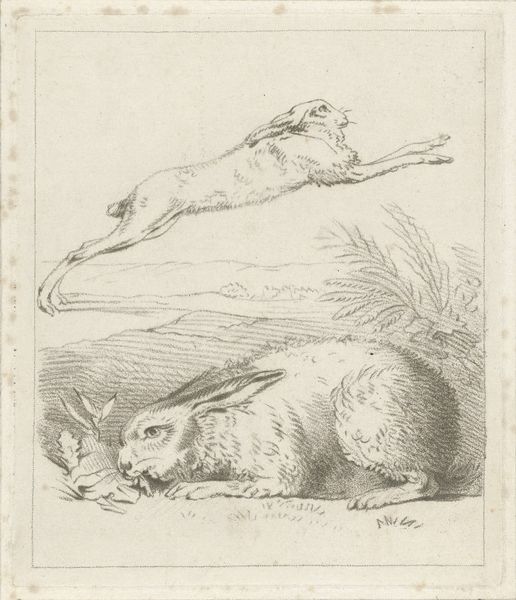
drawing, pencil
#
drawing
#
pencil sketch
#
figuration
#
romanticism
#
pencil
#
naturalism
Dimensions: 224 mm (height) x 130 mm (width) (bladmaal)
Curator: Hello and welcome. We’re here today to discuss Lorenz Frølich’s pencil drawing, “Et ophængt dødt egern,” or “A Hanging Dead Squirrel," created in 1836. It resides here at the SMK, the National Gallery of Denmark. Editor: My initial reaction is one of somber contemplation. The stark realism coupled with the inherent vulnerability of the subject... it evokes a surprising depth of feeling. There is a melancholy I didn't expect to encounter. Curator: Absolutely. The romantic era artists like Frølich were drawn to the complexities of life and death, challenging social hierarchies. In its direct representation, what narratives about class or nature do you read here? Editor: Well, the image immediately connects to a long tradition of vanitas imagery and memento mori. The hanging squirrel acts as a symbol of transience. A cultural message about the brevity of life – are we to understand that earthly concerns are fleeting? The tail especially calls out ideas about luxury. Curator: I find it interesting to consider his choice of medium as an attempt to mimic this. The artist may be using pencil specifically to evoke ideas of "sketches", which can mirror our fragmented lived realities in their incompleteness. Does Frølich successfully represent nature? Does its style succeed in making a political argument about realism? Editor: Undoubtedly, it resonates within the context of naturalism as a form of romantic expression. By isolating the animal in its stillness, rendered in such detail, the artist invites viewers to reflect on their relationship with the natural world. There is also an almost forensic quality – the sketch reads as objective but its emotional effect betrays that goal. The weight and texture of the fur. A tension is made between natural and representational, wouldn’t you say? Curator: Yes, I think the contrast that tension evokes serves the social critique and encourages contemplation about mortality that Frølich seems intent on highlighting in his works. The choice of a humble squirrel lends a relatability... making the scene more democratic. Editor: Well said. This piece serves as a visual reminder that our own time is finite, but is tethered to the natural. Its impact remains potent almost two centuries later. Curator: Agreed. By displaying images from real life in this accessible art, artists offer social critiques that serve to bring attention to current inequities, and Frølich is one of these forerunners.
Comments
No comments
Be the first to comment and join the conversation on the ultimate creative platform.
